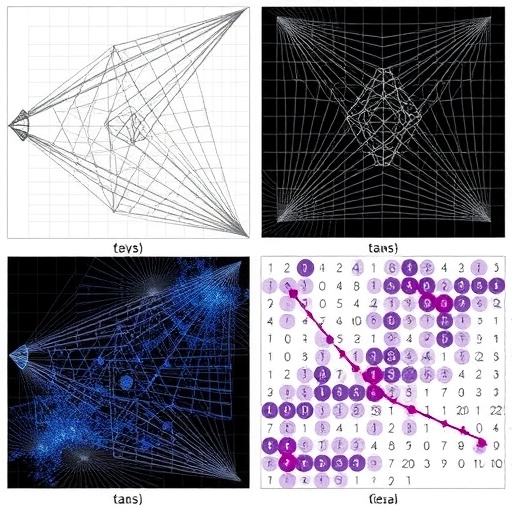In an impressive stride toward decoding the neural mechanics underlying flexible behavior, recent research reveals how the brain dynamically tunes sensory and motor representations based on task demands. This discovery illuminates the pivotal role of neural gain modulation in selectively emphasizing relevant stimulus features while suppressing irrelevant information. Such adaptability is crucial when organisms must switch between tasks that prioritize distinct sensory categories or motor responses, thereby optimizing behavioral performance in complex environments.
Previous studies have suggested that task relevance modulates the strength of neural responses to specific stimulus features, a phenomenon commonly described as gain modulation. Building on this foundation, the current research explores how this modulation unfolds during task switching in non-human primates engaged in visual categorization tasks focusing on either color or shape attributes. This study clearly demonstrates that the representation of stimuli in the neural population is not static but is attenuated or amplified in accordance with the monkey’s internal belief about which task is currently in effect.
At the heart of this investigation lies a novel quantitative measure termed the Compression Performance Index (CPI). The CPI captures the dynamic scaling of neural representations by computing the logarithmic ratio of stimulus separability in color versus shape subspaces. Findings show a pronounced scaling effect: color representations dominate during color-focused tasks, while shape representations are enhanced during shape-selective tasks. This dynamic scaling is evident across multiple brain regions implicated in flexible cognition, including the lateral prefrontal cortex (LPFC), frontal eye fields (FEF), and parietal cortex (PAR). Notably, the anterior inferotemporal cortex (aIT) remains normatively stable, maintaining a faithful representation of stimulus features regardless of task relevance.
The study further elucidates how this flexible scaling evolves with the animal’s learning and task discovery. As the monkey internalizes that a particular task—such as color classification—has commenced, the CPI shifts accordingly, indicating the gradual suppression of irrelevant sensory features like shape. Tight linkage between the strength of task belief encoding in the LPFC and the magnitude of scaling has been statistically confirmed, emphasizing the role of this prefrontal region in orchestrating flexible attentional filters and adaptive representations.
Interestingly, the modulation extends well beyond sensory representations. Motor-related neural activity, particularly in neurons selectively tuned to response axes, also undergoes suppression or amplification depending on task demands. For instance, in a task necessitating response on axis 1, neurons encoding responses on axis 2 show rapid attenuation of activity, showcasing the brain’s swift recalibration of motor plans alongside sensory information. This motor-level adjustment is notably faster than the sensory scaling processes and aligns with behavioral evidence of rapid inference of the appropriate response axis following task switches.
These findings position amplitude modulation as a geometric scaling mechanism within neural feature space, serving as a unified framework for the flexible adjustment of both sensory and motor information. Such a mechanism allows the brain to effectively gate task-relevant information and suppress potentially distracting or conflicting signals, thereby facilitating seamless transitions between different cognitive demands and enhancing task-specific processing efficiency.
Critically, this research underscores the LPFC’s central role as a hub where task belief formation and sensory-motor representation scaling converge. Its capacity to simultaneously modulate representations allows for the selective propagation of relevant signals through neural circuits, enabling consistent behavioral outputs even in dynamically shifting environments. Comparatively, other associative areas like the FEF and PAR contribute to sensory scaling but do not exhibit the same comprehensive modulation seen in the LPFC, reflecting a division of labor within the cortical network.
The experimental paradigm involved monkeys performing sequential tasks emphasizing different stimulus features and response axes. Neural data were analyzed using classifiers trained and tested across task sequences to isolate the learned changes in feature representation and response selection. These approaches revealed that scaling adjustments were not merely reflections of altered motor responses or stimulus properties but were intrinsically tied to cognitive states reflecting task beliefs.
The temporal dynamics of modulation reveal that while sensory representation scaling occurs relatively gradually as the subject learns the active task, motor representation suppression is decidedly rapid, unfolding within a handful of trials post-switch. This dissociation suggests distinct underlying neural mechanisms: a protracted restructuring of sensory maps guided by belief updating and a swift, perhaps subcortical, gating of motor plans to prevent errors.
This comprehensive understanding opens promising pathways for unraveling how flexible cognition is instantiated in the brain at the circuit level. Insights into gain modulation as a scaling of neural geometry not only enrich our knowledge of executive control but also suggest potential targets for intervention in disorders characterized by impaired cognitive flexibility, such as schizophrenia and ADHD.
Furthermore, the findings hold implications for artificial intelligence systems aiming to replicate human-like adaptability. Emulating the brain’s strategy of dynamic subspace scaling could enhance the robustness and flexibility of neural networks, enabling more efficient multitasking and context-dependent processing.
In sum, this compelling study advances the frontier of cognitive neuroscience by dissecting the neural basis of flexible behavior through the lens of compositional neural subspaces. The dynamic scaling of sensory and motor information tied to internal task beliefs emerges as a fundamental computational principle, unifying multiple facets of goal-directed behavior. As these discoveries unfold, they promise to deepen our grasp of the cognitive architecture that empowers the brain’s remarkable capacity for adaptation.
Subject of Research: Neural mechanisms of flexible behavior and task-driven modulation of sensory and motor representations.
Article Title: Building compositional tasks with shared neural subspaces.
Article References:
Tafazoli, S., Bouchacourt, F.M., Ardalan, A. et al. Building compositional tasks with shared neural subspaces. Nature (2025). https://doi.org/10.1038/s41586-025-09805-2
Image Credits: AI Generated
DOI: https://doi.org/10.1038/s41586-025-09805-2
Keywords: neural gain modulation, flexible behavior, task switching, lateral prefrontal cortex, sensory-motor scaling, compositional neural subspaces, cognitive flexibility, neural geometry, task belief encoding, primate neurophysiology
Tags: cognitive adaptability in neural systemscolor and shape attributesCompression Performance Indexdynamic sensory representationsflexible behavior in the brainmotor response optimizationneural gain modulationneural population representationstimulus feature relevancetask demand effects on neural processingtask switching in primatesvisual categorization tasks





